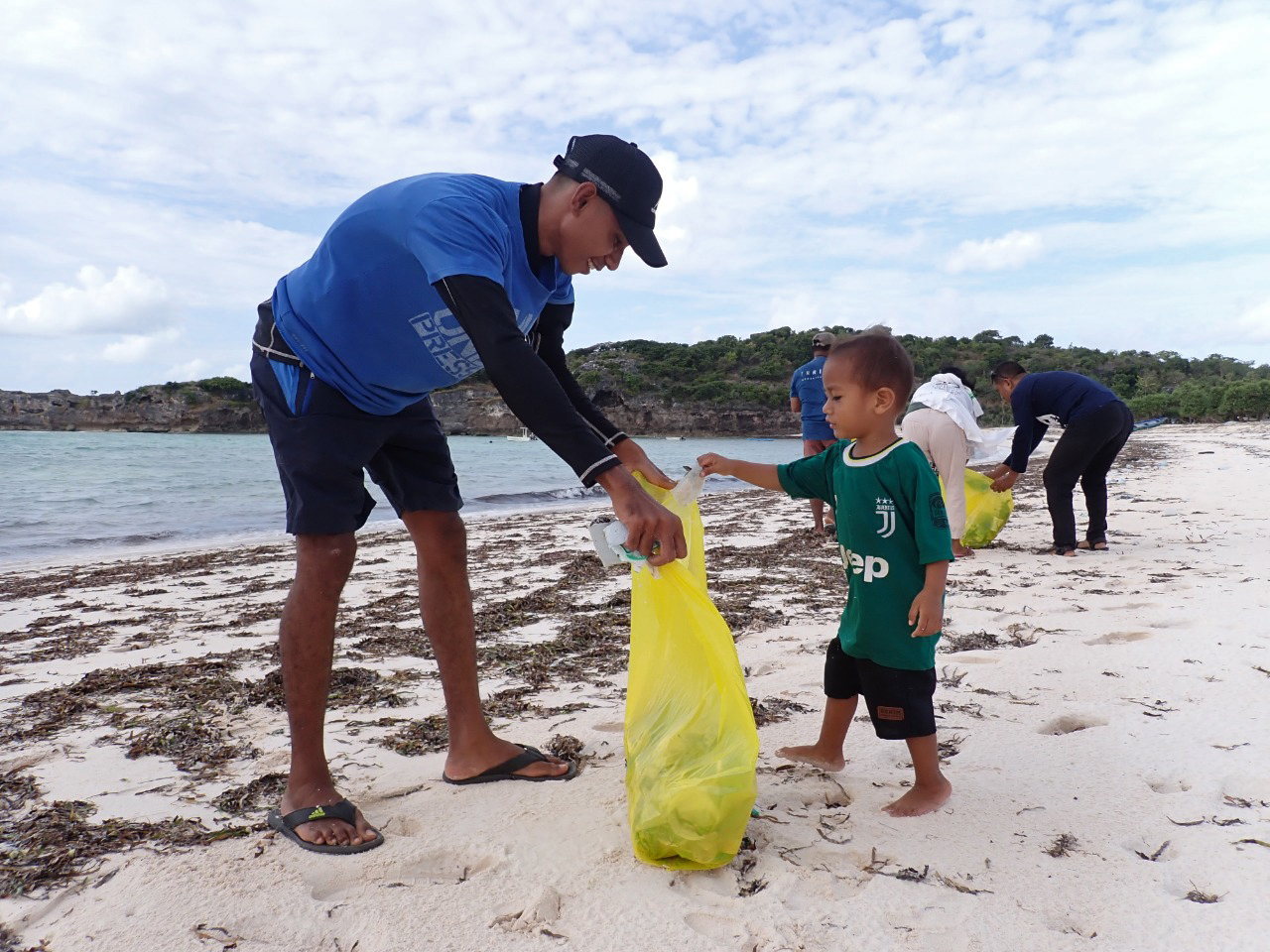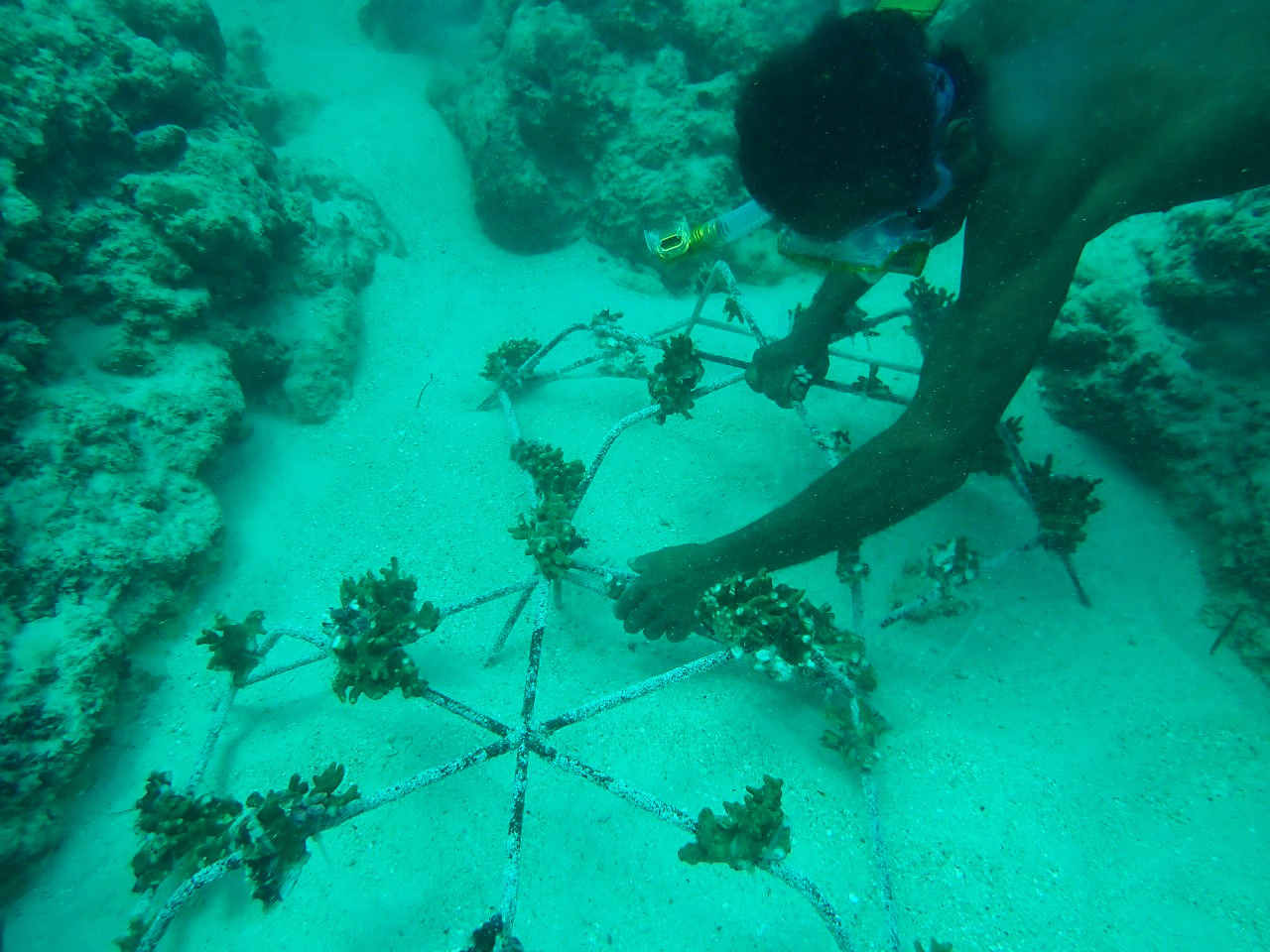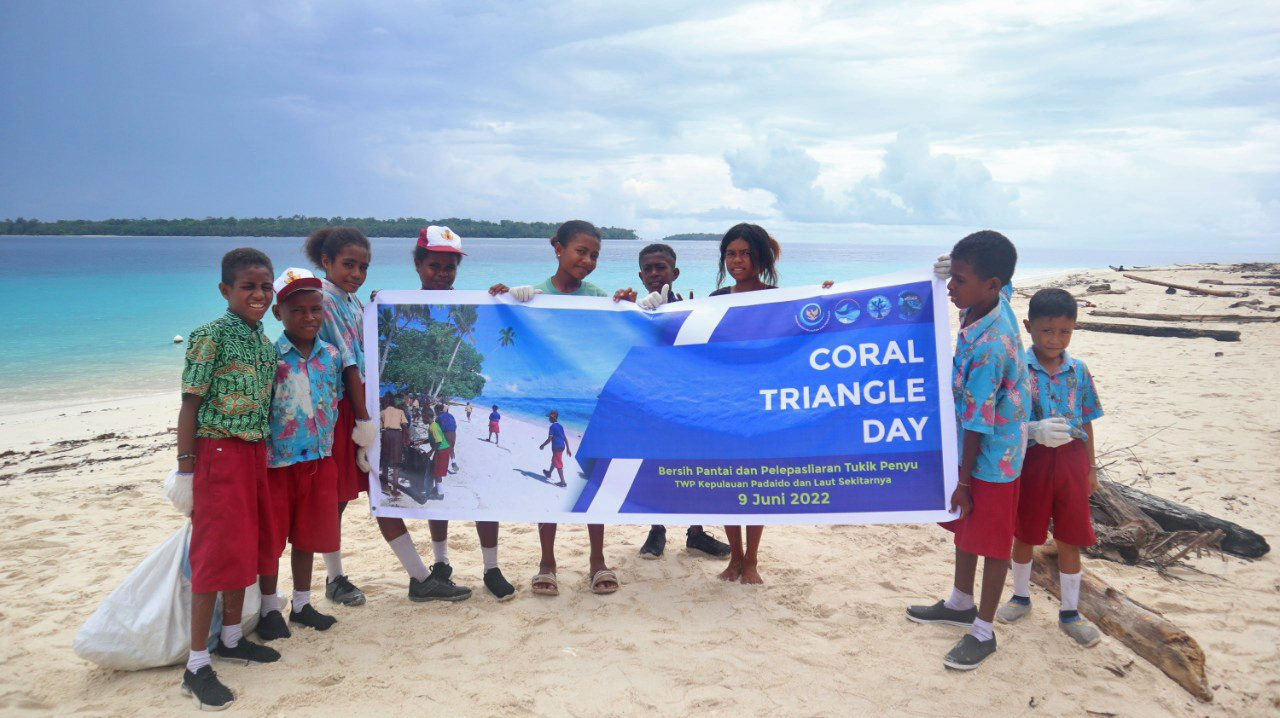- A small-scale project in Indonesia is seeing success in efforts to restore coral reefs damaged by blast fishing.
- Lightweight cast-iron rods form underwater “spiderwebs” that are placed onto existing reefs, with new coral grafted onto the structure.
- Proponents of the project say the benefits are already tangible, but add that to make them last, there needs to be an end to destructive fishing practices.
Ultra-strong fibers, multi-legged robots, pain relievers — all are human innovations inspired by spiders.
Now, conservationists in Indonesia are rehabilitating coral reefs using what’s known as the coral spider technique.
The method is a type of reef restoration project involving the installation of man-made “spiderwebs” onto which new corals are grafted. It entails placing small, lightweight rods “made from cast iron that is welded into a hexagonal shape, like a spider web,” Imam Fauzi, head of the National Aquatic Conservation Center (BKKPN) in Kupang, a port city on the island of Timor where one such project is underway, told Mongabay.
Indonesia has one of the most extensive coral reef systems in the world, but more than a third is in poor condition, according to a 2018 study. Much of the damage is due to warming oceans, blast fishing, plastic pollution, and severe storms.

The spider technique was previously deployed in Indonesia under a project backed by food giant Mars in which thousands of “coral spiders” were installed off the islands of Sulawesi and Bali.
At Oesina Beach in Kupang Bay, conservationists are installing spider frames. The six-sided structures have three top beams spanning 54 centimeters (21 inches) each and six 36-cm (14-in) side beams. The frame is latched onto the reef with plastic cable ties.
The practice is low cost, materials are readily available, construction is easy, and getting the material to the rehabilitation location doesn’t require great effort, Imam said.
“On average, transplanted coral with this method can grow well if maintenance and cleaning are routinely conducted,” he said.
BKKPN Kupang started using the spider technique in 2019 on the islands of Sabu (Sawu) and Raijua, west of Timor. Within its work scope, the center has done rehabilitation jobs in the provinces of West Nusa Tenggara, South Sulawesi, Maluku and Papua.

Currently, BKKPN Kupang is teaming up with two locally based units of national companies and YAPEKA, a conservation nonprofit, to rehabilitate the coral reefs of Oesina Beach. The damage there is due to blast fishing and poison fishing, Imam said.
The center has placed 150 spiderweb units covering 150 square meters (about 1,600 square feet) of reef, he said.
YAPEKA began work in Kupang Bay in October 2021 after Tropical Cyclone Seroja hit the area in April that year. The NGO started with 700 finger-long coral fragments secured by 50 spiderweb units covering a 0.2-hectare (0.5-acre) expanse. It has now expanded to 0.4-0.6 hectares (1-1.5 acres).
YAPEKA has installed 200 spiderweb units in one location in collaboration with PLN, the state-owned electricity company, which operates a coal-fired power plant in the bay area.
“If it evolves well, in three or four years it can become a coral garden allowing for underwater tourism and a source for adopting coral fragments for other locations [needing rehabilitation],” YAPEKA East Nusa Tenggara field coordinator Fredik Ngili told Mongabay.

YAPEKA has also set up an ecotourism information center on the beach, where tour guides are trained.
The coral garden area can be enlarged beyond Oesina Beach to cover other locations in the waters of Kupang Bay, Fredik said. He emphasized the need for community education on using environmentally friendly fishing gear as a way to preserve healthy coral reefs. There should also be an end to littering in the sea, especially plastic waste, and a campaign to spread the message about the benefits and functions of coral reefs, he added.
Imam agreed, adding that people shouldn’t overuse the benefit of coral reefs. He also called for safeguarding the health and quality of the water. He said boats shouldn’t drop anchor in coral reef zones and spiderweb units shouldn’t be installed on living coral.
Among the beneficiaries of the coral reef rehabilitation efforts are the inhabitants of Lifuleo village by the beach. “Fish development has increased income,” village head Zwingli Say told Mongabay.
Banner image: Rehabilitation of coral reefs in commemoration of Coral Triangle Day 2022 in Oesina Beach. Image by BKKPN Kupang.
A version of this story was reported by Mongabay’s Indonesia team and first published here on our Indonesian site on June 14, 2022.
